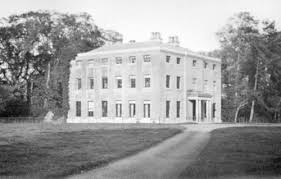Hugh Aldersey
Date of birth: 1889
Date of death: 10.3.1918
Area: Brotherton
Regiment: King's Shropshire Light Infantry
Family information: Son of Hugh and Evelyn Aldersey of Aldersey, Cheshire
Rank: Captain
War Service
Hugh Aldersey was a Captain in the Cheshire Yeomanry battalion of the Household Cavalry and Cavalry of the line (including Yeomanry and Imperial Camel Corp) then 10th (Shropshire & Cheshire Yeomanry) Battalion formed at Cairo on 2nd March 1917, from two dismounted Yeomanry regiments and attached to 231st Brigade in 74th (Yeomanry) Division.
After the failure of the Gallipoli Campaign, the Allied troops were evacuated to Egypt. This was then under British occupation and was threatened by Ottoman armies in Sinai to the east and a rebellion among the Senussi confederation of tribes in its western deserts. To help suppress the Senussi, four companies of camel mounted infantry were formed from volunteers from the Australian infantry returned from Gallipoli. Camels had been imported into Australia during the nineteenth century for transport purposes in some desert regions and some of the volunteers (especially from Western Australia) were already experienced camel jockeys and handlers. The unit was commanded by Brigadier General Clement Leslie Smith VC.
The Senussi were eventually forced into submission late in 1916 by starvation and by being denied the use of wells by camel corps units and light car patrols.
The camel companies were so successful against the Senussi, that a further fourteen companies were eventually formed. The extra Australian personnel for six companies were drawn from Australian Light Horse units, although reinforcements drafted to the Camel Corps were all from New South Wales. Volunteers for six British companies were drawn from Yeomanry mounted units (in many cases from units which were about to be converted to infantry). The Cheshire Yeomanry started WW1 as a cavalry regiment, they became “dismounted” cavalry and eventually infantry. However for a time in Egypt they were mounted on camels. New Zealand personnel also formed two companies.
At the outbreak of the First World War Palestine (now Israel) was part of the Turkish Empire and it was not entered by Allied forces until December 1916. By 21st November 1917 the Egyptian Expeditionary Force had gained a line about five kilometres west of Jerusalem, but the city was deliberately spared bombardment and direct attack. Very severe fighting followed, lasting until the evening of 8th December, when the 53rd (Welsh) Division on the south and the 60th (London) and 74th (Yeomanry) Divisions on the west, had captured all the city’s prepared defences. Turkish forces left Jerusalem throughout that night and in the morning of 9th December the Mayor came to the Allied lines with the Turkish Governor’s letter of surrender. Jerusalem was occupied that day and on 11th December General Allenby formally entered the city, followed by representatives of France and Italy. Meanwhile, the 60th Division pushed across the road to Nablus and the 53rd across the eastern road. From 26th to 30th December severe fighting took place to the north and east of the city but it remained in Allied hands. Jerusalem War Cemetery was begun after the occupation of the city, with 270 burials.
Hugh Aldersey died on active service on 10th March 1918 and is buried in the above cemetery.
Family Life
Hugh Aldersey was born about 1889 at Aldersey Hall in Cheshire. His family owned a considerable estate and in the 1901 census his father was said to be “living off his own means”. These must have been quite considerable in that he employed a butler, cook, nurse, laundry maid, housemaid, under housemaid, coachman, footman, head gardener and a garden labourer. Hugh (aged 12) was not present in the household on the day of the census as he and his brother Ralph (aged 11) were borders at the Dobie College boarding school in Heswall, Cheshire. In 1911 the then 22 year old Hugh was in residence at the family home. His occupation was described as “Land Agent”. The connection to Brotherton is not documented in the sources available, however it would not be amiss to conjecture that his occupation and the mention of Sutton in the Probate records linked him to the Byram Estate. He was single at the time of the 1911 census and as his father was the beneficiary in his will it seems he remained so. The sum left in his will was quite considerable for the time, being £1,441 5s. 5d., bearing in mind that a farm worker might only earn 16s/9d for a 58 hour week.
 Aldersey Hall
Aldersey Hall

